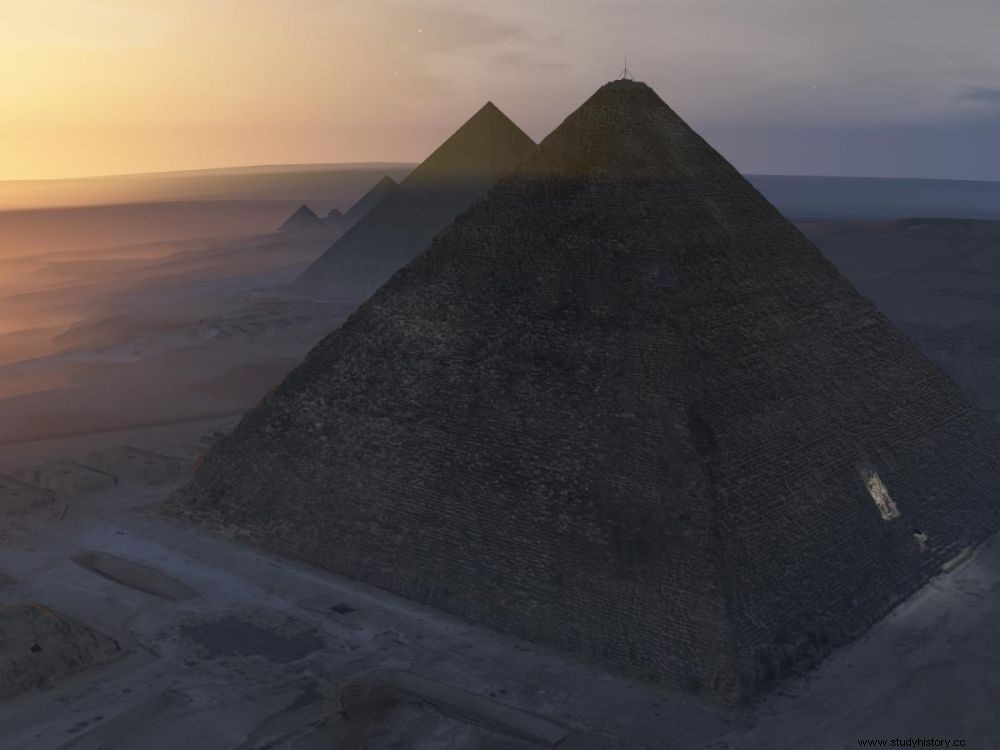Guillemette Andreu-Lanoé, former director of the Egyptian Antiquities department at the Louvre, and Peter Der Manuelian, professor of Egyptology at Harvard University, comment on the discovery of a 30-meter-long cavity in the pyramid of Cheops.

A 3D view of the Cheops pyramid.
This November 2, 2017, the ScanPyramids team publishes in the magazine Nature an article revealing the discovery of a 30-meter-long cavity in the heart of the pyramid of Cheops, in Egypt. If the existence of this "vacuum" has now been proven irrefutably, the experts do not know for the moment how they could access it. As for its raison d'être, it remains mysterious... For Sciences et Avenir , two renowned Egyptologists give their point of view on this historic discovery.
Archaeologist Guillemette Andreu-Lanoé, former director of the Egyptian Antiquities Department at the Louvre
“It is very difficult to imagine what this cavity could be. It goes against everything I have learned about the construction of the pyramids. These buildings, in particular for reasons of load distribution, is allowed. But a cavity of such size! We are in the novel, the unknown. What seems essential to me is the reliability of this discovery. In a field where there have been many theories and, it must be said, rantings, the measurements of three different teams lead to the same result, with an unassailable degree of certainty. hypotheses. I don't think this void has any symbolic function. Perhaps it is a chamber, and if so, a burial chamber. Abandoned, like the Queen's , or not. Antechambers? Why not. But we still have to find a circuit between them and the sarcophagus room. For the moment it is not visible. I I really admire the work of ScanPyramids. The revelations of this team open up major perspectives. It is the responsibility of the Egyptian Ministry of Antiquities to seize this opportunity and allow further investigations."
Peter Der Manuelian, professor of Egyptology at Harvard University (Massachusetts)
"The size of this cavity is undoubtedly what impresses me most about this discovery. However, we do not know enough about its exact shape and position at this time, and it is difficult to pronounce on its significance within the framework of the architecture of the pyramids. We can only speculate. In these buildings we find corridors, passages, burial chambers, and stores. Sometimes they are devices with ritual function, other times practical function. Before going any further, we need to learn more, especially if and how this void is connected. If these were shops – a bold guess! – it It is possible that they contain funerary equipment deposited there in ancient times, in which case it is reasonable to think that some could resemble those discovered in 1925 in the tomb of Cheops's mother, Queen Hetepheres (G 7000 X), by the American Egyptologist Geor ge Reisner, at the head of the Boston Museum of Fine Arts Expedition".
